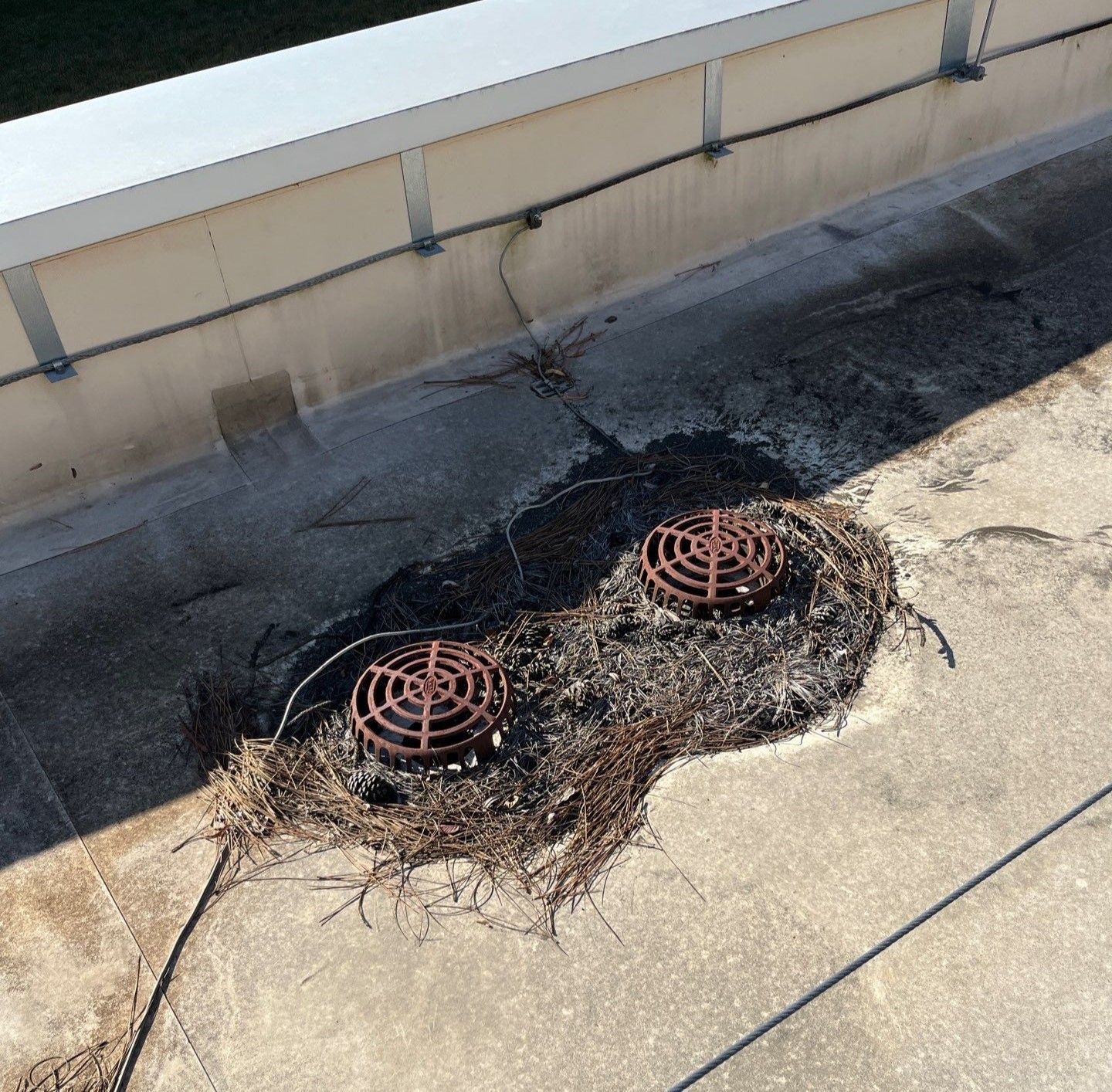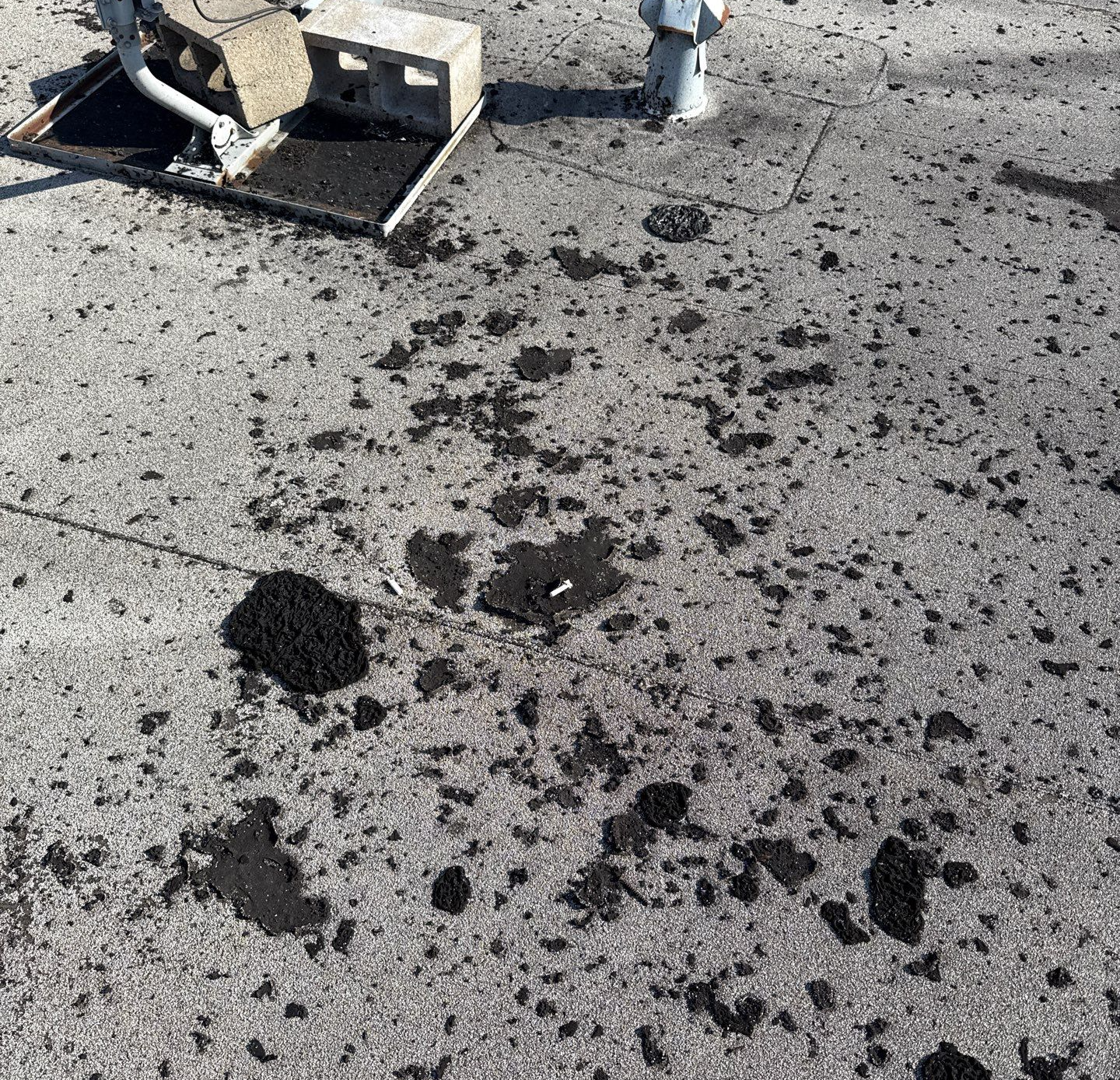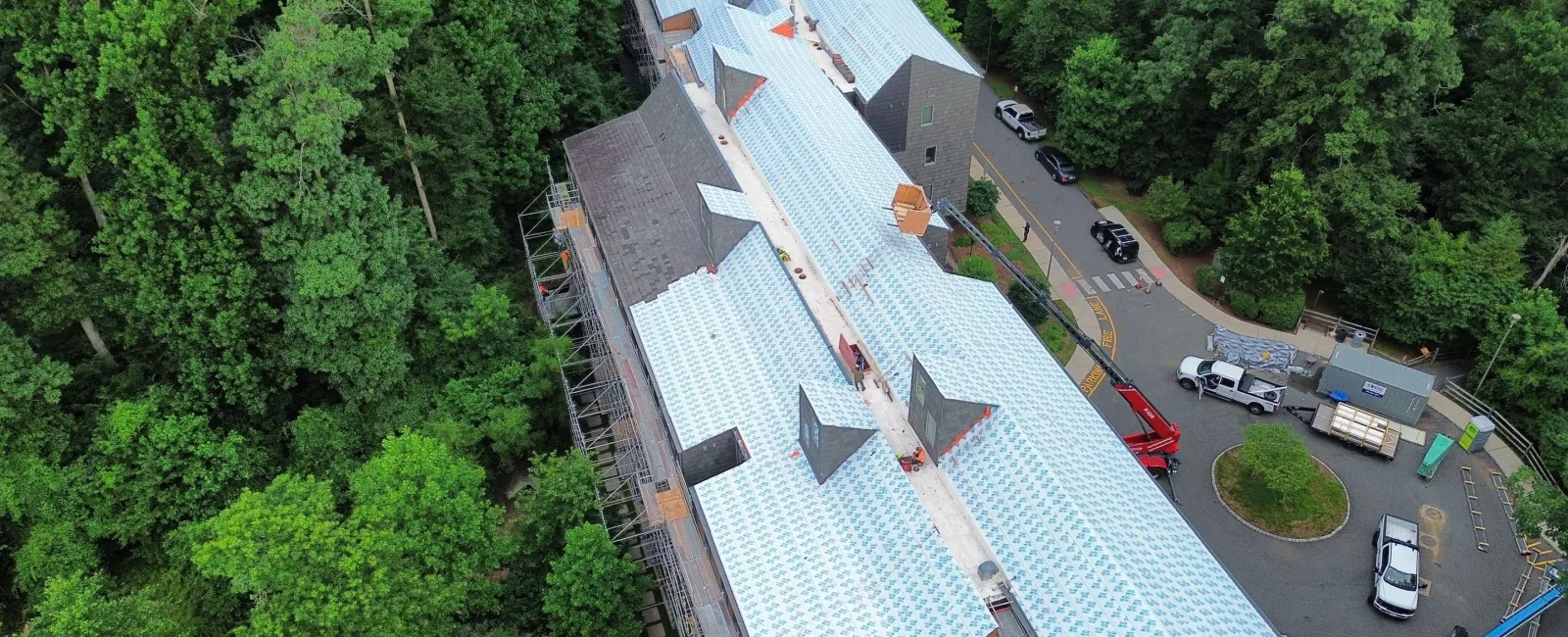Preventative Maintenance Checklist
Protect Your Investment
A single roof leak can cost your business tens of thousands of dollars or shut you down completely. Most roof disasters we see are preventable. This guide gives commercial property owners a practical checklist to protect their roof, their business, and their bottom line.
Why Preventative Maintenance is Critical for Commercial Buildings
A preventative maintenance program on a national average costs about $1,500-$2,500 annually for a typical 15,000 sq. ft. building with a B to C roof grading. Without it, you could be looking at $10,000+ per year in reactive repairs.
However, the real cost goes beyond the roof. Leaks can lead to business interruptions, which can kill revenue. Water can damage inventory, the building structure, and, in the worst case, create health issues due to microbial growth or worse, mold.
Preventative maintenance also keeps your roof warranty active. Most large manufacturers require documented annual inspections. Skip them, and they can suspend or deny coverage when you need it most. That same documentation proves storm damage versus pre-existing conditions during insurance claims.
What is Commercial Roofing Preventative Maintenance?
Think of it like healthcare and annual checkups to catch small issues before they become serious. A maintenance program catches that 1-inch seam problem before it becomes rotten decking and mold damage four years later.
The Commercial Roofing Preventative Maintenance Checklist

1. Drainage Systems
Clear gutters, scuppers, and infield drains of debris.
Check for blockages or weeds.
Look for pooling water on the roof.
Ensure water flows properly to drainage points.
Why it matters: Ponding water can lead to structural damage, leaks, and vegetation growth that can damage the roof membrane.

2. Roof Edges and Flashings
Inspect metal trim, edge caps, and flashing.
Verify all screws are tight (screws commonly back out around HVAC units).
Check that nothing is loose or lifting.
Examine all flashing around the building edges.
Why it matters: Backed-out screws create openings for water infiltration and wind uplift that can compromise the roof system.
3. Penetrations
Examine every roof penetration (vents, pipes, HVAC curbs, skylights).
Check that sealants are intact and not cracked, peeling, or shrinking.
Why it matters: This is where leaks can originate. Sealants typically last only 2 years before UV rays and weather deteriorate them.

4. Roof Surface & Membrane
Look for physical damage such as punctures, cuts, or membrane blistering.
Check for building movement stress cracks, or unexpected manufacture defects.
Inspect for debris (screws, metal, trash) that could puncture the membrane.
Why it matters: Small punctures become major leaks. Low-slope roofs don't just provide shelter. They house the less visible, but essential building components. From boilers, HVAC units, to solar panels, and even deck systems. With these come contractors who routinely access and work on and in the roof environment, increasing the risk of damage.

5. Rooftop Equipment & Obstructions
Clear debris, leaves, and branches.
Clean grease and oil buildup that is seen on restaurant and industrial-type buildings.
Remove any items that shouldn't be on the roof.
Why it matters: Loose debris can damage the membrane and create water entry points. On one property, vandals left shopping carts that tore three-foot gashes in the roof. We caught it six days before a major storm, potentially saving the client $50,000-$100,000 in damage.
6. Documentation
Take photos of all areas inspected.
Create a baseline condition report with red/yellow/green status ratings.
Document any warranty information and certification details.
Track all maintenance history.
Why it matters: This documentation proves pre-existing conditions versus storm damage for insurance claims, vandalism, and even system failures. It also protects your warranty by providing the documented proof manufacturers require.
How often should you inspect?
New roofs need annual inspections, while older roofs need quarterly checks. High-risk areas like hail corridors, cold climates, and hurricane zones need pre- and post-storm season inspections. Buildings with many roof penetrations should be inspected quarterly since 90% of leaks start there.
What Should a Comprehensive Preventative Maintenance Program Include?
Professional inspections (1-4 times per year based on roof age, type, and climate).
Documentation and photo evidence.
Minor repairs and sealant touch-ups.
Debris removal and drain clearing.
Maintenance history tracking for warranty compliance
The Real Cost of Ignoring Preventative Maintenance
One of our most dramatic examples involved a restaurant that never cleaned grease off the roof. On a hot summer day, it combusted, resulting in a fire that was a total loss. All they needed was a simple maintenance program.
A hospital's Emergency Room was shut down due to a small roof leak, which stopped surgeries and patient care, costing half a million dollars every single day until we fixed it. This example shows the true business impact of the smallest leaks that could have been prevented.
These aren't exceptions. They're warnings.
Ready to Protect Your Roof?
Your commercial roof is a critical asset protecting your entire business. Preventative maintenance isn't an expense; it's insurance against business interruptions or loss.
Contact Mattco today for a comprehensive roof inspection and customized preventative maintenance program. Let's catch problems before they become disasters.
